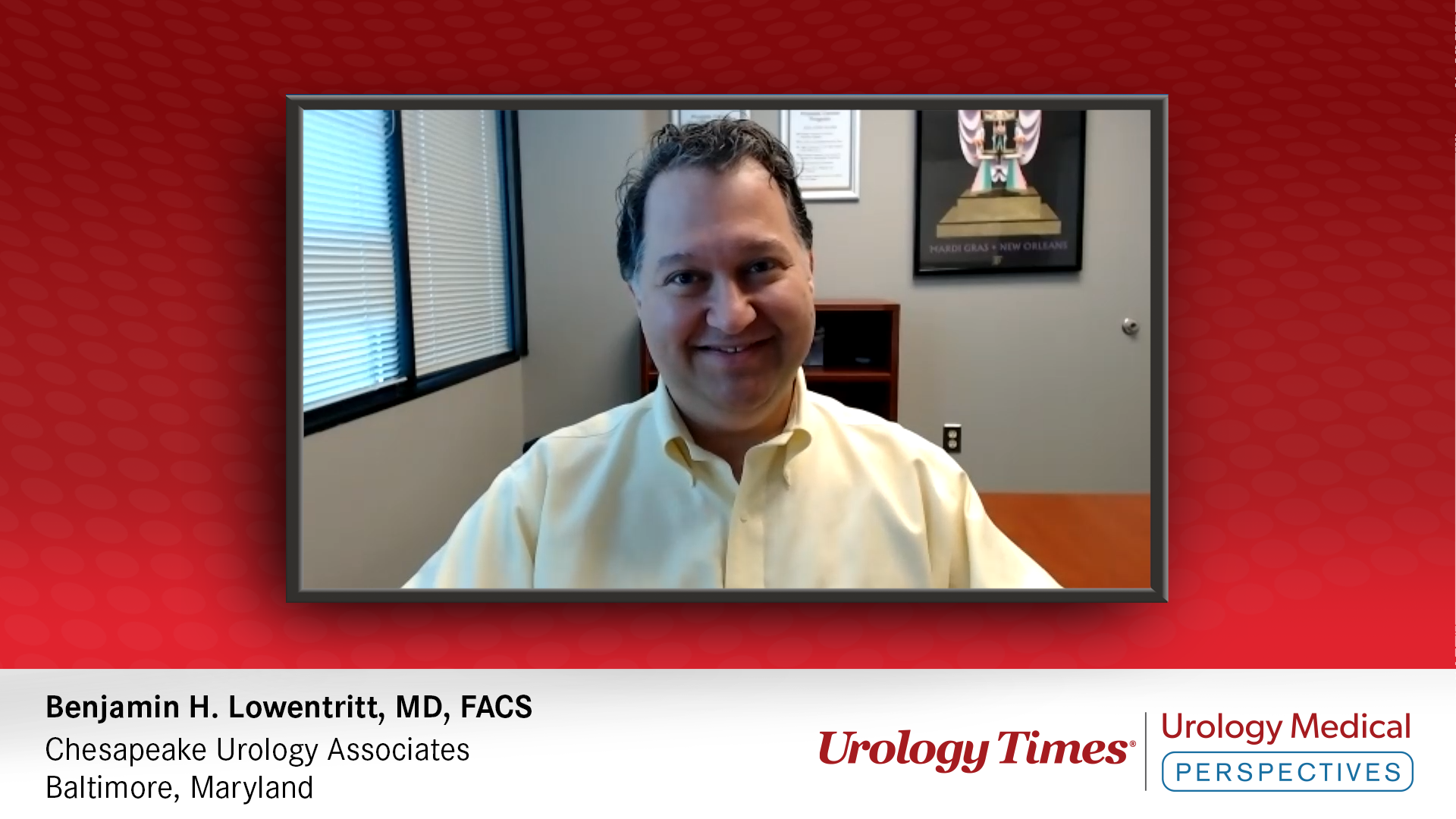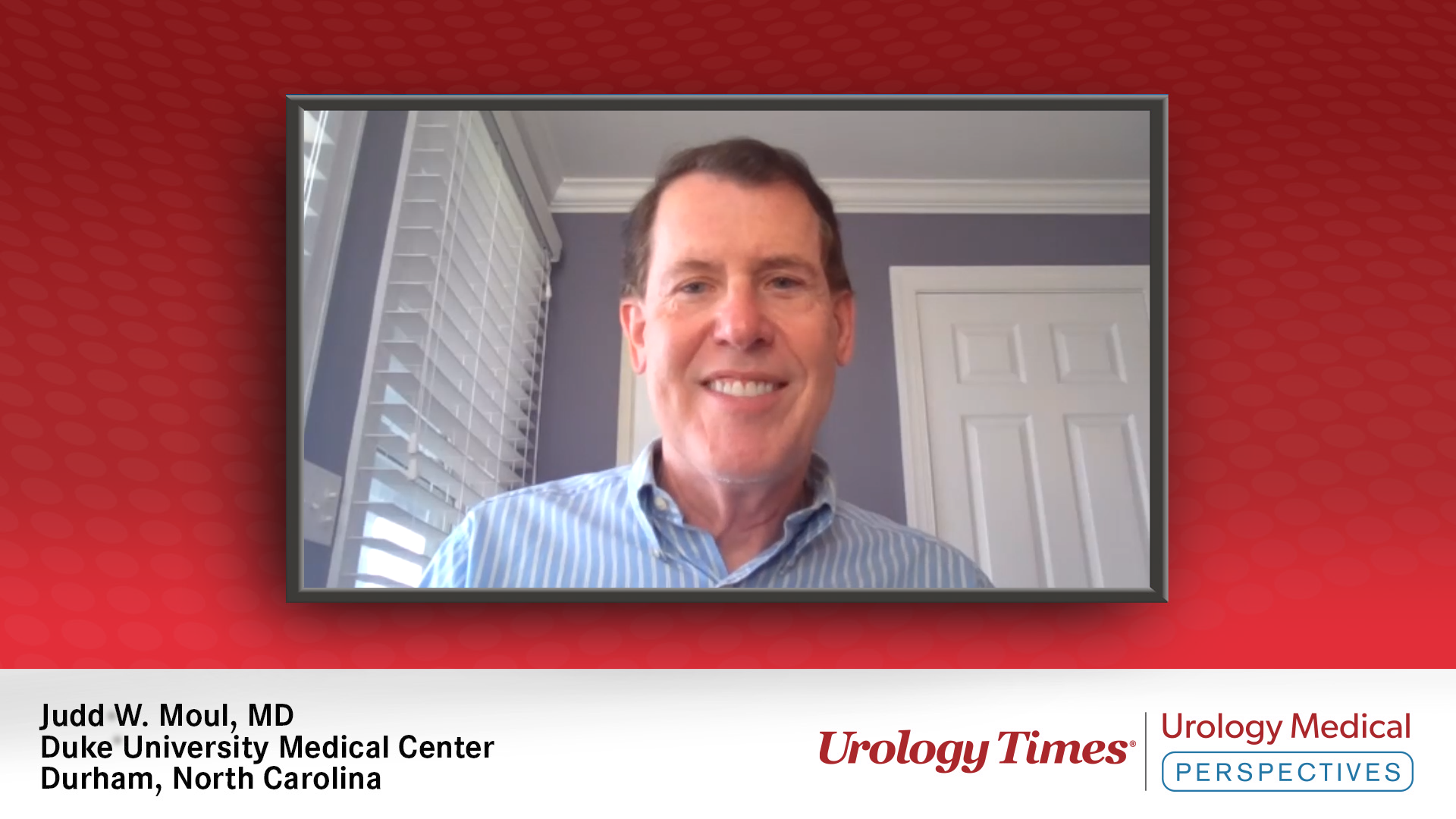Article
EP. 1B: Advanced/Metastatic Prostate Cancer: Disease Overview, Treatment Strategies, and Unmet Needs
Author(s):
In this companion article, Judd W. Moul, MD, of Duke University Medical Center, shares expert insights into factors affecting treatment decisions in metastatic hormone-sensitive and castration-resistant prostate cancer.
Following adjustments to the United States Preventive Services Task Force guidelines in the use of prostate-specific antigen (PSA) screening, urologists and oncologists have endeavored to address the rising incidence and death rates of prostate cancer using novel treatment approaches. In this new Urology Medical Perspectives series, “Expert Perspectives on Advanced/Metastatic Prostate Cancer,” leaders in the management of hormone-sensitive or castration-resistant prostate cancer reflect on the evolving role of androgen deprivation therapy (ADT) and chemotherapy, including key considerations in the use of combination approaches with leuprolide. Ahead, Judd W. Moul, MD, reflects on clinical and nonclinical factors affecting treatment decision-making.
Urology Times®:What is the incidence of advanced or metastatic prostate cancer? What trends have emerged over time?
MOUL: Metastatic prostate cancer has unfortunately become more common over the last several years—and in addition to being more common, the death rates from advanced prostate cancer are going up. We can trace that back to 2011, when the United States Preventive Services Task Force changed their guidelines for prostate cancer screening, which went into effect in 2012. That government-mandated agency gave the PSA test, the screening test for prostate cancer, a D rating. A D [rating] meant that they felt that there was more harm than good to the PSA test. As a result, primary care physicians around the country stopped offering the PSA test, for the most part. Therefore, the screening rates for prostate cancer went down. Over the last several years, [in] direct correlation, temporally, with that decision, the rates of metastatic prostate cancer have gone up in this country.
Most recently, we’ve seen some very interesting data come out of [American Society of Clinical Oncology] and [American Urological Association] meetings that have recently been published. Sadly, they show that the death rates for metastatic prostate cancer have gone up in the United States as well. Fortunately, in 2018, the United States Preventative Services Task Force changed the guideline to give the PSA test a C rating, so at least primary care physicians [have begun ]to offer the PSA test [again]. However, it’ll probably be [some] time before we see the death rates and the rates of metastatic disease go down.
Urology Times®:What factors influence whether you recommend active surveillance vs active treatment, such as pharmacologic treatment or radiotherapy, in patients with advanced or metastatic hormone-sensitive prostate cancer?
MOUL: When a patient presents with metastatic prostate cancer, [which] is called hormone-sensitive M1 or metastatic prostate cancer, the first thing we do is try to risk-assess that patient to determine how severe his cancer is. We try to determine if it’s a low-volume or a high-volume metastatic prostate cancer, because the treatment approaches will vary.
Active surveillance, as we would use for very early-stage prostate cancer, would be rarely used for metastatic prostate cancer, unless the patient had other severe health conditions [that made] his life expectancy very limited. For the vast majority of patients who present with metastatic prostate cancer, we recommend active treatment and not active surveillance. We’re really trying to assess the degree [of] tumor volume [and] the how much cancer the patient has, their tumor burden, because that will determine the next phase—the initial recommended treatment.
Urology Times®:If you recommend treatment, how do you select among the options? What clinical and nonclinical factors influence your treatment choice?
MOUL: The baseline treatment, the backbone treatment, for all patients who present with hormone-sensitive metastatic prostate cancer is traditional ADT. The term traditional ADT means a shot, a pill, a combination shot or pill, or even removal of the testicles, which will be the main way to decrease the testosterone production coming from the testicles.
The injections or shots would be a drug such as leuprolide acetate, which [has been a] common treatment for advanced prostate cancer [for a] long time. It has a number of different brands and slightly different formulations. Or, instead of leuprolide acetate, it could be a drug called degarelix, which is a GnRH [gonadotropin-releasing hormone] pure antagonist that could be used, and there are advantages and disadvantages [with each approach]. Most recently [added to our options] is an oral agent called relugolix, which does the same essential thing as the degarelix injection. Finally, if patients did not want to take one of these injections periodically or did not want to take the daily relugolix pill, they could have their testicles removed, which is called a orchiectomy or castration. That would be a permanent solution, which has some advantages, but the disadvantage is [that] it is permanent and cannot be used intermittently.
Urology Times®:What type of ADT is leuprolide? What factors influence your decision to recommend it, and how often do you do so?
MOUL: Leuprolide acetate, which comes in a number of different brands and slightly different formulations has been our, if you will, go-to ADT since the early 1980s, so this class of drugs has been around now for 40 years. Leuprolide can be given in a monthly injection, a 3-month injection, a 4-month injection, and a 6-month injection. Leuprolide is a [luteinizing hormone-releasing hormone] agonist drug, and the advantage is [that] it’s tried and true. These drugs have been around for a long time. It’s convenient because it offers dosing regimens of [various] durations, which are very nice for clinical practice.
The disadvantage is that, because it’s an agonist, when it’s used, the testosterone level will actually increase in the first several weeks before it goes down. Sometimes you can get a cancer disease flare phenomenon because of the testosterone rising before it declines. That’s not clinically relevant for a large population of patients, but it might be clinically relevant for patients who have severe metastatic disease where any flare or increase in testosterone could flare their PSA [and] could flare their disease. In other words, [it could] temporarily make the disease worse, so there are certain subgroups of patients in whom perhaps you would not want to start with a leuprolide drug. You might be more inclined to start with degarelix or relugolix because these drugs are pure antagonists, meaning they have a more direct mechanism of action where you do not get this initial disease flare or surge. For a patient who has extensive metastatic disease, particularly if he has disease in his spine [or] close to his spinal cord, a flare of the disease could make that metastatic site worse and could impinge on the spinal cord. In such a case, you would definitely want to start with degarelix or relugolix rather than leuprolide.
For many patients with less-severe disease, it’s perfectly acceptable to start with leuprolide. The advantage, particularly during [the] COVID-19 [pandemic], was the fact that leuprolide comes in these longer depots. For example, a patient who doesn’t want to go to the doctor’s office very often can get a 6-month leuprolide injection, and if his disease is not too bad and he’s doing well otherwise, he’d only have to visit the doctor’s office [twice a year]. For some patients, convenience trumps the other situations that I talked about.
Urology Times®:For which patients do you add on novel hormone therapy, such as abiraterone, apalutamide, or enzalutamide, or chemotherapy such as docetaxel to ADT? To what extent does your decision depend on the particular ADT regimen in question?
MOUL: Traditional ADT, such as leuprolide acetate, degarelix, or relugolix, will form the backbone treatment for advanced prostate cancer. Over the last 5 to 7 years, research has clearly shown that adding one of these novel hormonal therapies or adding docetaxel chemotherapy definitely improves survival—no question about it. Virtually all patients who present with metastatic disease, who present with hormone-sensitive M1 or metastatic prostate cancer, should receive something else with the traditional ADT. There are currently 4 FDA-approved options [to be added to the ADT]: oral enzalutamide; oral apalutamide ADT or oral hormonal therapy ; abiraterone acetate plus low-dose prednisone; or docetaxel chemotherapy given every 3 weeks for a course of 6 cycles.
The [hormone therapy] pills—enzalutamide, apalutamide, or abiraterone acetate—are all effective whether the patient has low-volume or high-volume metastatic disease, so they could be used in any patient. However, the effectiveness of docetaxel chemotherapy has been proven only in high-volume metastatic disease. So, as a urologist, the first thing I look at is whether my patient has low-volume or high-volume metastatic disease. If it’s low-volume metastatic disease, then I can personally treat that patient as a urologist by adding apalutamide, enzalutamide, or abiraterone acetate pills taken once a day, along with the traditional leuprolide, degarelix, or relugolix. On the other hand, if that patient has high-volume metastatic disease, I’ll send him for a consultation with [genitourinary] medical oncology to have my partners in that discipline talk to him about whether he wants to receive docetaxel chemotherapy.
Urology Times®:Do you often use these types of combination therapies in patients with metastatic castration-resistant prostate cancer?
MOUL: Yes. So far, we’ve been talking about hormone-sensitive metastatic prostate cancer, and, just to reiterate, those patients will receive traditional ADT along with either enzalutamide, apalutamide, abiraterone acetate, or docetaxel chemotherapy. Eventually, the vast majority of these patients progress to castration-resistant disease, meaning their disease is getting worse despite [the treatments] we just talked about. Sometimes, these [same] oral agents are used in the castrate-resistant setting. Let’s say, for instance, the patient had previously received docetaxel; next, he may go onto one of the oral therapies. But if a patient had already received one of the oral therapies, then perhaps we would go on to chemotherapy next, because we’ve learned that these novel hormonal therapies are great as first-line [treatments], but once a patient starts to progress after having been on one of these oral agents for several years, [if you] add the second oral agent, you usually don’t get as much bang for the buck. The tendency [might be to think], if one pill doesn’t work, let’s try another pill, but sadly we haven’t seen such great responses adding the second or third pill. Typically, a lot of those patients would move from the oral agent to chemotherapy as the next step. Also, just to [mention], darolutamide is likely to be approved in this space, so in the future we’ll have 4 oral options: darolutamide in addition to enzalutamide, apalutamide, and abiraterone acetate.
Urology Times®:What are some of the most critical challenges and unmet needs in the treatment and management of advanced or metastatic prostate cancer?
MOUL: What we’ve learned in the last 7 years is that using ADT [alone] for metastatic prostate cancer is not enough. Even though leuprolide acetate, degarelix, [and the newest], relugolix, [have been] game changers, those treatments alone are not sufficient for the typical patient presenting with metastatic prostate cancer. They need to add one of the novel hormonal agents—enzalutamide, apalutamide, or abiraterone acetate—or docetaxel chemotherapy. We know that adding those definitely makes a difference. The problem is, data still show that up to 50% of our patients in the United States who present with metastatic prostate cancer do not get this effective therapy. They’re getting just ADT alone and [are] not getting the benefit of one of these additional agents that we know clearly improve survival. In my opinion, the greatest unmet need is having our urologists and medical oncologists who work in the field of advanced prostate cancer do a better job of getting patients on this dual therapy: ADT plus either one of these novel oral agents or 6 cycles of chemotherapy.
Transcript has been edited for clarity.
Newsletter
Stay current with the latest urology news and practice-changing insights — sign up now for the essential updates every urologist needs.





